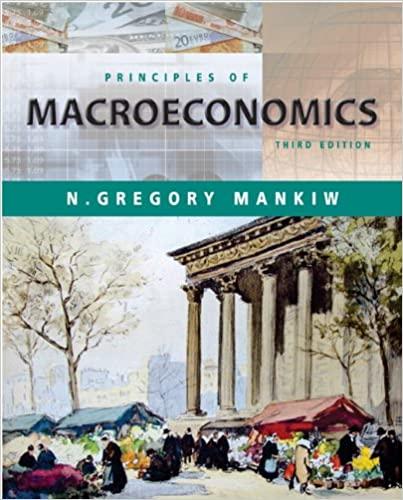12. A case study in the chapter analyzed purchasing-power parity for several countries using the price of
Question:
12. A case study in the chapter analyzed purchasing-power parity for several countries using the price of a Big Mac.
Here are data for a few more countries:
PRICE OF PREDICTED ACTUAL COUNTRY A BIGMAC EXCHANGE RATE EXCHANGE RATE South Korea 3,000 won _____ won/$ 1,218 won/$
Spain 375 pesetas _____ pesetas/$ 155 pesetas/$
Mexico 19.9 pesos _____ pesos/$ 9.54 pesos/$
Netherlands 5.45 guilders _____ guilders/$ 2.05 guilders/$
a. For each country, compute the predicted exchange rate of the local currency per U.S. dollar. (Recall that the U.S. price of a Big Mac was $2.43.) How well does the theory of purchasing-power parity explain exchange rates?
b. According to purchasing-power parity, what is the predicted exchange rate between the South Korean won and Spanish peseta? What is the actual exchange rate?
c. Which of these countries offers the cheapest Big Mac? Why do you think that might be the case?
Step by Step Answer:







